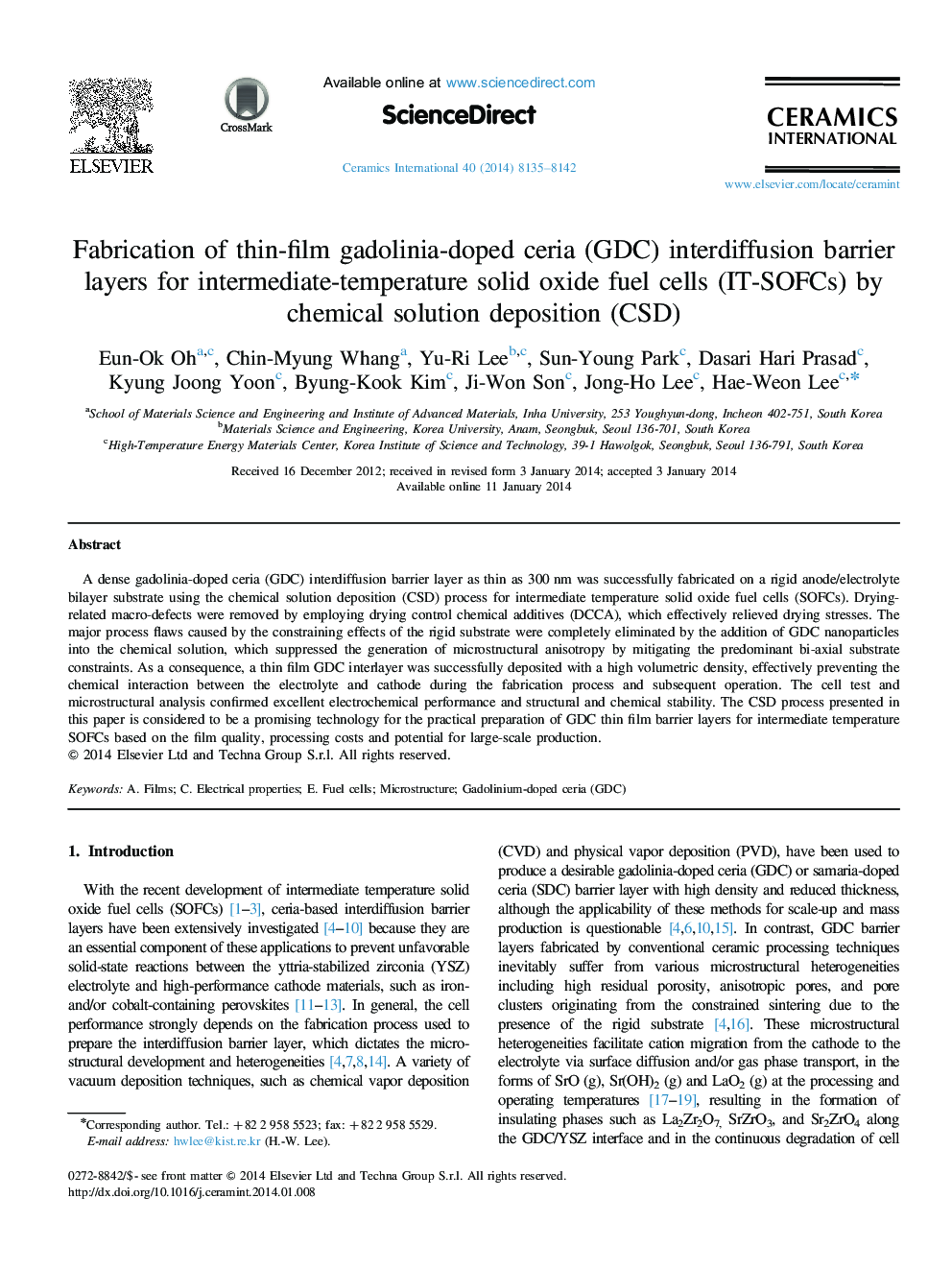| Article ID | Journal | Published Year | Pages | File Type |
|---|---|---|---|---|
| 1461558 | Ceramics International | 2014 | 8 Pages |
A dense gadolinia-doped ceria (GDC) interdiffusion barrier layer as thin as 300 nm was successfully fabricated on a rigid anode/electrolyte bilayer substrate using the chemical solution deposition (CSD) process for intermediate temperature solid oxide fuel cells (SOFCs). Drying-related macro-defects were removed by employing drying control chemical additives (DCCA), which effectively relieved drying stresses. The major process flaws caused by the constraining effects of the rigid substrate were completely eliminated by the addition of GDC nanoparticles into the chemical solution, which suppressed the generation of microstructural anisotropy by mitigating the predominant bi-axial substrate constraints. As a consequence, a thin film GDC interlayer was successfully deposited with a high volumetric density, effectively preventing the chemical interaction between the electrolyte and cathode during the fabrication process and subsequent operation. The cell test and microstructural analysis confirmed excellent electrochemical performance and structural and chemical stability. The CSD process presented in this paper is considered to be a promising technology for the practical preparation of GDC thin film barrier layers for intermediate temperature SOFCs based on the film quality, processing costs and potential for large-scale production.
